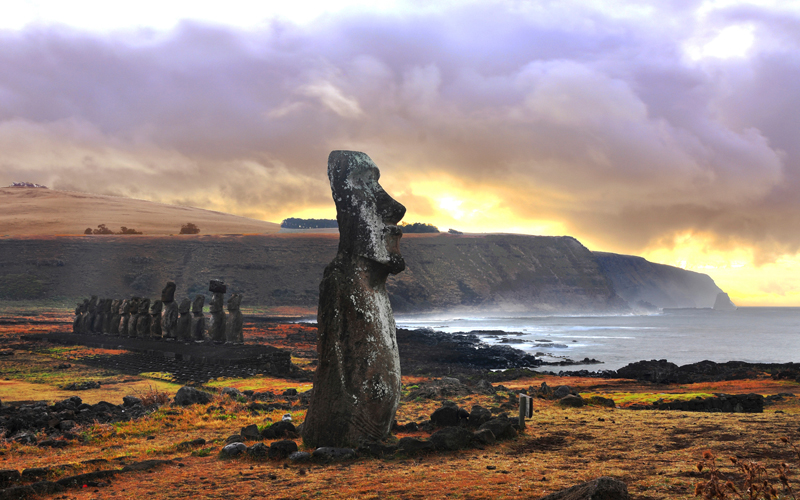
Part I of a three-part sustainability series by guest blogger Larry Eighmy, managing principal of The Stone House Group
Even if you don’t believe in climate change, you must believe in sustainability. As former treasury secretary Hank Paulson said, “Economic growth and environmental protection are not at odds. They’re opposite sides of the same coin if you’re looking at longer-term prosperity.” Sustainability is the key to our future—it also has deep roots in our past.
So where did the sustainability movement originate?
How did we first influence our communities to think local, act global?
How do we continue to do so?
Educating our neighbors, family, and friends on the importance of sustainable practices can help inspire communities to act together to support our long-term well-being.
You could argue that sustainability is an inherent condition of being human. The ability to gather, maintain, and preserve resources was necessary for survival in the earliest of times. Early successful civilizations like that of Mesopotamia excelled in domesticating animals and cultivating farmland on fertile terrain. But the civilization ultimately crumbled as a result of mismanagement of those resources through over-farming combined with population growth.
Another cautionary tale of is that of Easter Island. The island’s Rapa Nui civilization was almost completely wiped out by overpopulation along with the destruction and extinction of resources that were limited to begin with.
The impacts of neglecting stewardship of the natural resources supporting these early communities was hard-learned, and it’s a lesson we can take heed of today. Contrastingly, there are also communities that have lived in resource-strained areas that with proper care and attention have been able to survive in them for hundreds or even thousands of years.
As humans’ use of natural resources to support economic development grew in the 19th and 20th centuries, the impacts of consuming those resources became increasingly evident. The industrial revolution influenced an upsurge in intensive agriculture practices, which increased the amount of available food and supported population increases. At the same time, industries were growing, using natural materials to create products while also providing jobs that allowed individuals to acquire more wealth and have the ability to consume more, leading to the lifestyles we have today.
But how can we counteract the environmental impacts of industry without eliminating the comforts it provides? Being responsible stewards of our communities, supporting the local economy, and buying sustainably grown products produced within your community can help by reducing overall resource consumption. Buying an apple from an orchard down the street is better for your neighbors and the environment than buying one shipped from New Zealand to your local grocery store.
This isn’t a new idea. It’s one derived from looking back at what worked and learning from what didn’t, throughout history. The local, organic, and sustainable movement is a return to what were once natural, successful practices for us.
In addition to thinking about how we use our resources in our communities, it’s important to observe the changes that occur in our communities. We can affect change. One source of inspiration for local activism spawning global action is Rachel Carson. A marine biologist and conservationist, she wrote her observations in several books, the one with the greatest impact being Silent Spring, regarding the effects of pesticides on nature. Her work helped contribute to the founding of the Environmental Defense Fund and the Environmental Protection Agency, as well as countless grassroots activist organizations.
And then there’s environmentalist Bill McKibben who makes a compelling case in his provocative manifesto Deep Economy for moving beyond “growth” as the paramount economic ideal. He advocates pursuing prosperity in a more local direction, with regions producing more of their own food, generating more of their own energy, and even creating more of their own culture and entertainment. He proposes that, “our purchases need not be at odds with the things we truly value and the more we nurture the essential humanity of our economy, the more we will recapture our own.”
Thinking about our local communities, the resources that support them, and how those resources are managed, can help us understand how to support our communities to thrive over the long term. Speaking with your local network about these issues can inspire local communities to work together to ensure that resources are being managed in a way that best serves the community. Observing and recording the negative changes in our local surroundings can help stop negative practices and mismanagement of resources.
Being stewards of our local environment will ensure that our communities will remain healthy and strong for generations to come.

Larry Eighmy is the managing principal of The Stone House Group, which helps clients find the overlap between financial and environmental sustainability through energy management, climate action plans, facilities management, and sustainable design services. The company has served more than 250 clients, from Pennsylvania’s Lehigh Valley to the Caribbean and the Far East. The company practices what it advocates, as evidenced by its development of a Zero Carbon Neighborhood at the Flat Iron in South Bethlehem, Pennsylvania, where the company is headquartered.




Thank for your hard work and for the good you are doing for our world. Rachel Carson has been my hero since I first read her book long ago. If not for her we’d all be in an even bigger mess than we are right now. I appreciate all the work you are doing for all of us!